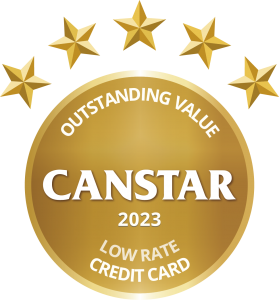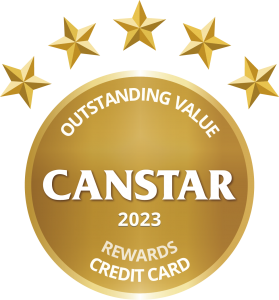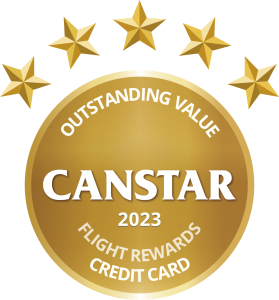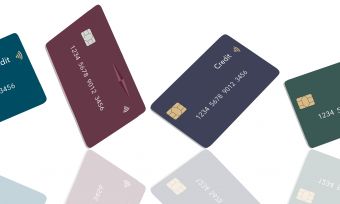How much do you put on your credit card each month? Do you put most of your purchases on your plastic, or do you keep it tucked away for big-ticket buys? Do you pay your card off in full, or do you have an outstanding balance? These are important questions to think about when considering what type of credit card will work for you.
There are four types of credit cards to consider:
Read on for a breakdown of the four card types, what types of spending habits they suit, and some of the best cards currently available.
Low rate credit cards
Low rate credit cards are all about the interest rate. And the lower, the better.
Credit cards come with an interest-free period, typically 44 or 55 days. If you pay off your balance in full, within this period, no interest is charged. But once this period is up, whatever balance is outstanding will accumulate interest. A low rate card charges a lower rate than standard credit cards.
Is a low rate credit card right for me?
If you struggle to pay off your credit card bill in full each month and carry over debt from month to month, then the interest rate you pay on your debt should be your main concern. Which is where a low rate card can help, as it will help reduce the interest charges accruing on your debt. A low rate card could suit someone who uses their credit card for:
- Everyday bills and expenses they can’t afford to manage
- For necessary big-ticket expenses they can’t afford, such as medical bills, car repairs, a new computer, etc
If you are constantly accruing interest on your credit card balance, don’t be tempted by cards offering Airpoints or cashback dollars. Any rewards you earn likely won’t be enough to warrant the higher fees and interest rates attached to such cards.
What about interest-free and balance transfer offers?
Many credit cards offer new applicants no interest (or heavily discounted interest rates) for a set period of time. For example, you may get six months interest-free when you take out the card. This can be for new purchases on the card, or for balances transferred from another card. While this can be a great way to manage and reduce your debt within the reduced interest window, you need to consider:
- Once the interest-free period ends what interest rate does the card revert to? If you still have an outstanding balance, you’ll be stuck paying this higher rate
- If you plan to continue using the card once the interest-free period ends, and accumulate more outstanding balance, is the interest rate as low as you can get?
- Is there a balance transfer fee? Some cards offer 0% interest on balance transfers but charge a one-off balance transfer fee. For example, 3% of the balance being transferred
→Related article: Best Balance Transfer Credit Cards

Which low rate card is best?
In Canstar’s latest Credit Card Awards and Star Ratings, credit cards from three banks earn our 5-Star Outstanding Value Rating for their low-rate cards:
ANZ Low Rate Visa
- Annual fee: $0
- Purchase interest rate: 12.9%
- Balance transfer: 1.99% for 24 months
TSB Low Rate Mastercard
- Annual fee: $20
- Purchase interest rate: 9.95%
- Balance transfers available on request
Westpac Fee Free Mastercard
- Annual fee: $0
- Purchase interest rate: 12.9%
- Balance transfer: 5.95% for life of balance
Compare Credit Cards with Canstar
The comparison table below displays some of the low rate credit cards currently available on Canstar’s database for Kiwis looking to spend around $2000 per month (some may have links to providers’ websites). The products are sorted by our latest Star Rating (highest to lowest), followed by provider name (alphabetical). Use Canstar’s credit card comparison selector to view a wider range of credit cards. Canstar may earn a fee for referrals.
Compare Credit Cards with Canstar here!
Low fee credit cards
Many credit cards charge annual fees. Depending on the card, fees can range from $0 all the way up to a few hundred dollars. Typically, the lower the fee, the fewer frills or rewards. So if you’re not earning enough rewards to warrant paying a high annual fee, or are accruing interest charges greater than the benefits you’re earning, a low fee card could be a great option.
Is a low fee card right for me?
A low fee card is ideal for an occasional credit card user who always pays down their balance. It offers all the convenience of having ready access to credit, without ongoing high costs. So long as any purchases made on the card are paid off in full each billing period, the card costs very little, if anything, to use.
Before getting a low fee card consider:
- Will you spend beyond your limit? Even if you only use the card occasionally, if you end up with an outstanding balance, you could end up paying more interest than that offered by a low rate card
- How often will you really use your card? If you end up using your card frequently, you may miss out on the benefits of a rewards card
- What other fees or charges are involved? Are there minimum spending limits or high fees for late payments, for example?
Which low fee cards are best?
Finding a low fee card is easy thanks to Canstar. You can use our helpful comparison table to compare credit cards from all leading lenders and sort them by star rating, interest rate, balance transfer rate, or annual fee. A quick search of our database shows there are currently six cards with $0 annual fees:
- American Express Airpoints Card
- ANZ Low Rate Visa
- ASB Visa Light
- Kiwibank Zero Visa
- SBS Visa
- Westpac Fee-Free Mastercard
Keep in mind that terms, interest rates, additional fees, rewards, and other factors can all vary between cards. So be sure to compare carefully. For the same reason, it may be better to go with a card that has a low annual fee (for example less than $50) if its other features better suit your spending profile.
 Rewards credit cards
Rewards credit cards
Rewards cards offer incentives to encourage you to use them. These are often rewards or cashback points for every dollar spent. Rewards points can be redeemed on travel, tech, clothes and a wide variety of other offers. Cashback points are converted into cash and credited to your card account once a year. Additionally, some cards offer complementary travel insurance, concierge services and other benefits.
Is a rewards card right for me?
Rewards cards tend to come with higher fees and interest rates. So they are not ideal for users who regularly have an outstanding balance. Instead, rewards cards are great for those who spend within their limits, and use their credit card with the aim of accumulating rewards.
As long as you clear your outstanding balance each month, if you use the card for all your spending, you can amass hundreds of dollars of rewards, all for the cost of the card’s annual fee. However, before applying for a rewards card, keep in mind:
- Are the rewards worth the fee? Rewards cards come with high fees. So if you’re not putting enough on the card, and accumulating enough rewards, you may be spending more than you’re saving
- Are you overspending for the sake of rewards? For some, rewards cards can tempt overspending. It’s easy to think “only XX more dollars and I’ll earn another point”. If you’re buying for the sake of rewards, this card may not be for you, especially if you’re spending beyond your limits
Which rewards cards are best?
In Canstar’s latest Credit Card Awards and Star Ratings, credit cards from these banks earn our 5-Star Outstanding Value Rating for their rewards cards:
$12,000 Annual Spend
$24,000 Annual Spend
$60,000 Annual Spend
$120,000 Annual Spend
 Flight rewards credit cards
Flight rewards credit cards
Flight rewards cards in NZ offer Airpoints. Airpoints is Air New Zealand’s loyalty program and they can be used as currency to purchase flights (1 Airpoint = $1) as well as other rewards. You can use Airpoints online to pay for rental cars, holidays, a Koru membership, wine, or a range of Air New Zealand merchandise, for example.
Additionally, by accumulating Airpoints you can get added travel benefits. For example, your frequent flyer status can be upgraded, giving you benefits such as priority boarding and access to Air New Zealand’s Koru lounge, plus a host of other partner airlines’ lounges.
Is a flight rewards card right for me?
These cards are ideal for those who travel frequently. Many of the perks involved with these cards are travel-related. However, Airpoints can be used for a variety of other goodies, so even those who aren’t regular travellers can still get some value out of this type of credit card.
However, keep in mind that like all rewards cards, to offset the high fees you’re best using your credit card for all your spending to accumulate as many Airpoints as possible. You must also pay off the balance before it accumulates interest, as these cards also have high interest rates.
Which flight rewards cards are best?
In Canstar’s latest Credit Card Awards and Star Ratings, credit cards from these providers earn our 5-Star Outstanding Value Rating for their flight rewards cards:
Flight Rewards Credit Cards $12,000 Annual Spend
Flight Rewards Credit Cards $24,000 Annual Spend
Flight Rewards Credit Cards $60,000 Annual Spend
Flight Rewards Credit Cards $120,000 Annual Spend
Compare Credit Cards with Canstar
If you’re interested in a new credit card, our free comparison tool covers all the major cards in the market, and includes our prestigious Star Ratings.
The comparison table below displays some of the rewards credit cards currently available on Canstar’s database for Kiwis looking to spend around $2000 per month (some may have links to providers’ websites). The products are sorted by Star Rating (highest to lowest), followed by provider name (alphabetical). Use Canstar’s credit card comparison selector to view a wider range of credit cards. Canstar may earn a fee for referrals.
About the author of this page
 This report was written by Canstar’s Editor, Bruce Pitchers. Bruce has three decades’ experience as a journalist and has worked for major media companies in the UK and Australasia, including ACP, Bauer Media Group, Fairfax, Pacific Magazines, News Corp and TVNZ. Prior to Canstar, he worked as a freelancer, including for The Australian Financial Review, the NZ Financial Markets Authority, and for real estate companies on both sides of the Tasman.
This report was written by Canstar’s Editor, Bruce Pitchers. Bruce has three decades’ experience as a journalist and has worked for major media companies in the UK and Australasia, including ACP, Bauer Media Group, Fairfax, Pacific Magazines, News Corp and TVNZ. Prior to Canstar, he worked as a freelancer, including for The Australian Financial Review, the NZ Financial Markets Authority, and for real estate companies on both sides of the Tasman.
Enjoy reading this article?
You can like us on Facebook and get social, or sign up to receive more news like this straight to your inbox.
By subscribing you agree to the Canstar Privacy Policy




Share this article